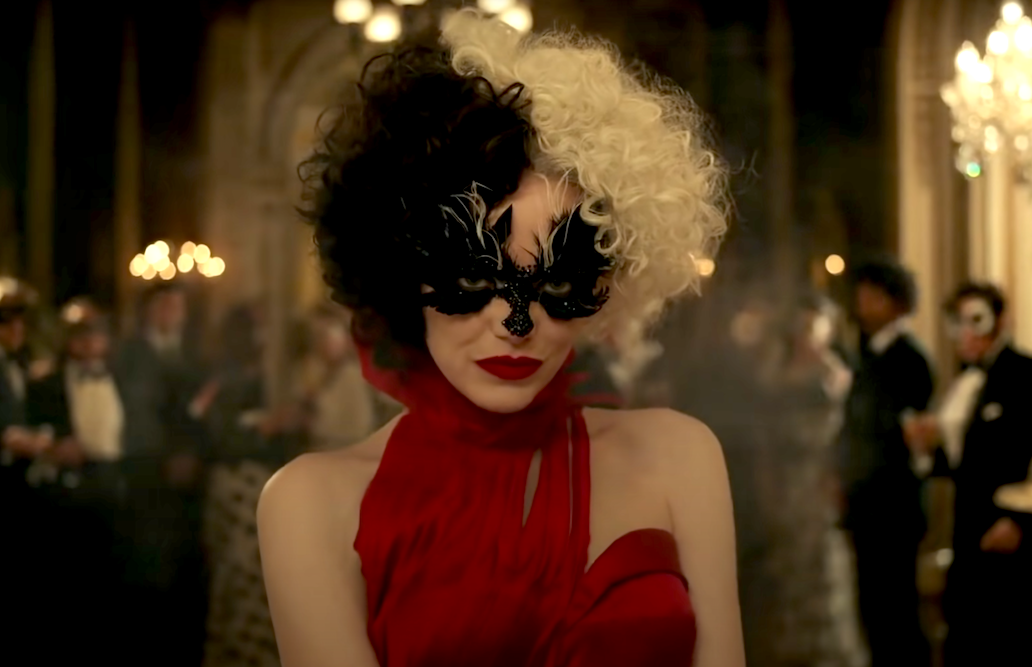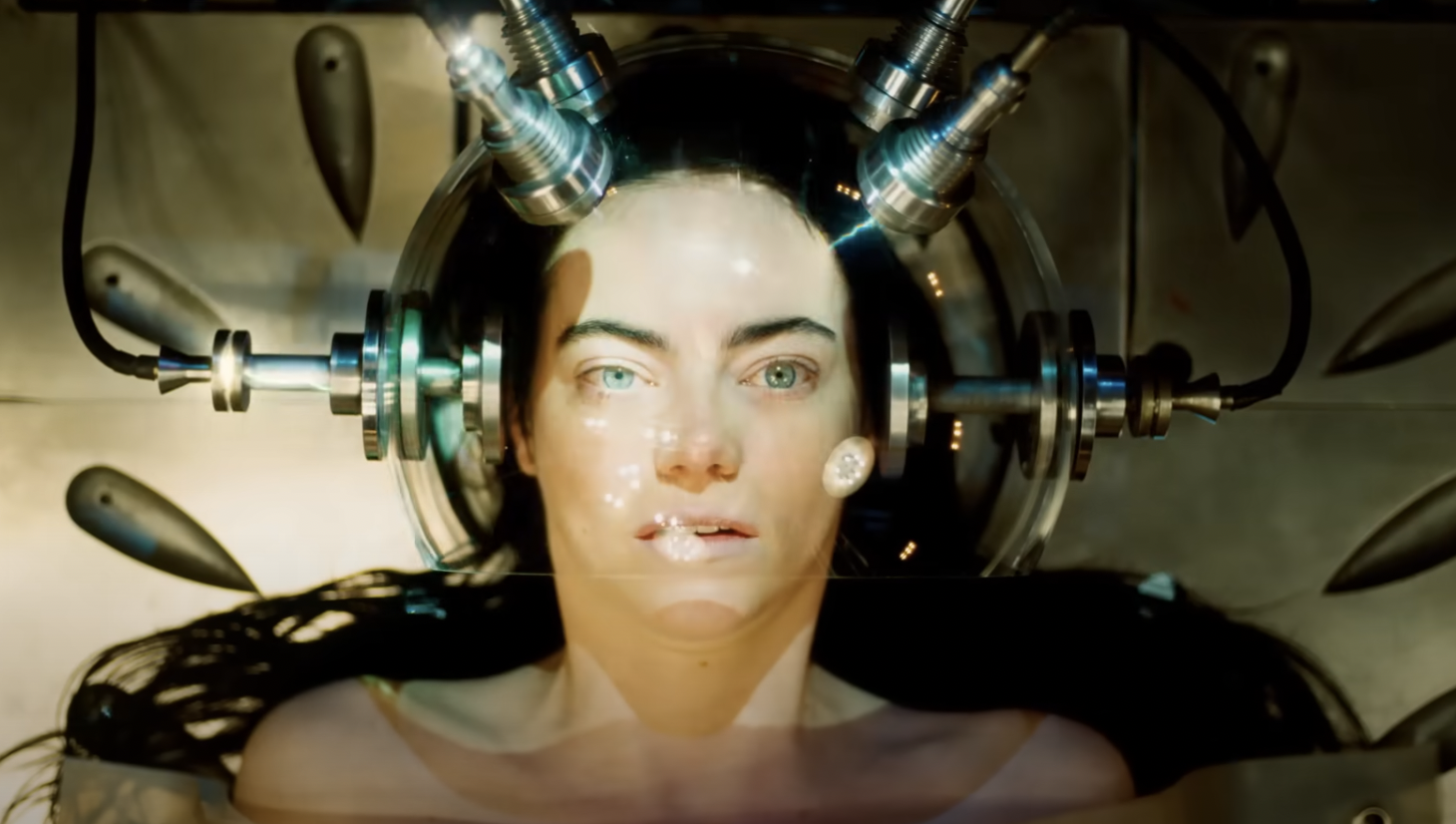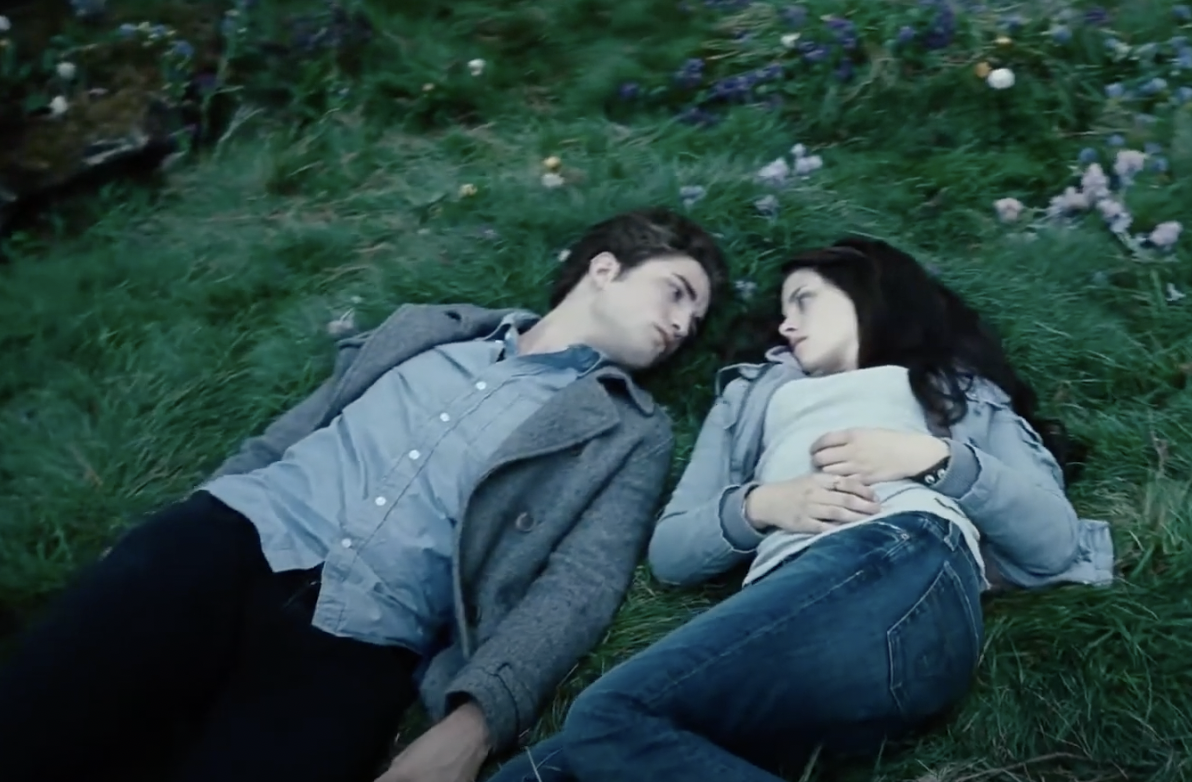Books & Culture
Please Just Let Women Be Villains
From "Wicked" to "Cruella," rehabilitated villainesses rely on outdated ideas of women's virtue

When the trailer for Cruella dropped, Twitter greeted it with jeers. People mocked it for being too much like The Joker; too much like Disney’s earlier film Maleficent; too much like Warner Brothers Birds of Prey— and contributed tweet after tweet about what an odd choice it was to rehabilitate Cruella DeVil in particular: a character who spent her original 1961 film trying to kidnap and kill puppies to make their skins into a coat.
This seems far from the response Disney expected. It introduced the trailer with the tag line, “Brilliant. Bad. A little bit mad,” calling to mind the oft-quoted characterization of Lord Byron by his ex-lover Lady Caroline Lamb: “mad, bad, and dangerous to know.” The allusion carefully positions Cruella not as a villain, but a Byronic hero: a talented, melancholy rebel, tragically misunderstood by their society. Cruella’s dialogue also reflects this, as she explains: “From the very beginning I realized I saw the world differently from everyone else. That sit didn’t sit well with some people. But I wasn’t for everyone.” Cruella is not, therefore, a two-dimensional villain who likes to kill dogs and inspired a song that rivals “You’re A Mean One, Mr. Grinch” as a Renaissance blazon of bad qualities. She is a misunderstood #girlboss whose actions will be justified by the film, and whose actions most likely were in reaction to bad things other people did to her first… a hard sell for literally cartoon villain whose name is a pun on “cruel devil,” and who lives in Hell Hall.
Cruella is the reductio ad absurdum of a long trend of redemptive retellings featuring pop culture villainesses.
Cruella is the reductio ad absurdum of a long trend of redemptive retellings featuring pop culture villainesses. These female villains are introduced in two dimensions—quite literally, in many cases. But when given depth and turned from antagonist to protagonist, their narratives take on a curious similarity. These recentered stories aren’t a straight retelling of events, but a complete restructuring of the narrative. We don’t merely get the villain’s perspective; we get her justification. She had to kidnap Dorothy, curse a baby, smuggle a machine gun into a mental asylum, or kill a hundred and one puppies. We, the audience, just didn’t have the whole story. We didn’t know the context of her actions—which exonerate her. And in the end, she really wasn’t punished for her crimes in the end, but redeemed—so you see, she isn’t really a villain! She was just tragically misunderstood. She was good all along.
We don’t see this sort of reboot with say, Jafar from Aladdin, or Count Olaf from A Series of Unfortunate Events. Even Joker allowed its main character to exist within a realm of moral ambiguity; though it was clear social systems had failed him on every level, the movie makes no apologies for Arthur Fleck’s descent into murder. But when big media conglomerates decide to make their villainesses—their literally cartoonishly evil villainesses—into main characters, they also make them into heroines who repent of their evil ways, while also demonstrating that they were never really that evil after all.
American culture tends to want to explain away the evil actions of women—mostly fictional women, but sometimes real ones—because female villainy rests uncomfortably with lingering cultural perceptions of women’s purity and virtue. The idea that all women must be innately virtuous took form in the mid-19th century, in the movement towards “True Womanhood,” which historians like Barbara Welter have dubbed “the cult of domesticity.” Building off of the late 18th-century idea of “separate spheres,” which claimed that innate gender differences made men more suited for public life and women for private life, the cult of domesticity provided social regulation for the rapidly expanding American middle class and a sense of social stability in a time of great political, economic, and societal upheaval. Middle and upper-class white women became revered for the domestic labor to which they had been confined: social regulation enshrined as near-religion. Women were the center of the family, the light of the home, and the angel of the house. “True Women,” as Welter put it, were known by their domesticity, submissiveness, piety, and purity. In a case of mingled cause and effect, women showed their mastery of the domestic sphere by displaying these qualities, and the display of these qualities proved that they were naturally fitted for that sphere because they were more pious and pure. Indeed, they were naturally religious and moral. Popular fiction of the time often showed criminal men redeemed by the virtue of a true woman. Their moral fiber was perceived to be so much stronger and purer than their male counterparts that a woman could never really commit a crime, and a woman who did commit a crime must have been tricked into it, or led into it by the bad influence of men. Within this structure, such a woman then becomes “fallen.” And yet the very language of exclusion centers on the angelic nature of woman. She is not bad or evil or a villain, she is fallen, like an angel into hell.
Middle and upper-class white women became revered for the domestic labor to which they had been confined.
More than 100 years later, this idea of women’s inherent goodness has proven hard to shake. The cult of domesticity centered around cis white women, whose virtue is still used as a pretext for violent rhetoric and action against Black and trans people, from whom their purity must be protected. And in fiction, when pop culture focuses on a woman who committed a crime, it’s either a cautionary tale or one of these rehabilitation stories, focused on the idea that the villainess’s fallen state is not her fault and is certainly not permanent.
This justification (it isn’t her fault she’s a villain) and the means of showing it (recentering a popular narrative around a female villain) reached popular prominence in 1995, with Geoffrey Maguire’s novel Wicked, and with the musical adaptation in 2003. Both the book and the musical reconsider the Wicked Witch of the West from L. Frank Baum’s The Wonderful Wizard of Oz. The witch, whom Maguire named Elphaba, does have a song in the second act of the musical where she makes a conscious commitment to give up trying to be good, but the show goes to great lengths to point out that Elphaba was not born wicked, and though she may make a big show of giving up good deeds, she never consciously chooses to do an evil one. Her greatest sin in the show—animal abuse in the form of magically creating flying monkeys— is something she was tricked into, and her villainous reputation thereafter springs mostly from Elphaba setting herself up as the Wizard’s enemy, and the Wizard mounting an extremely effective PR campaign against her. In the end, Elphaba regains her goodness by playing into stereotypes about her villainy and then completely rejecting her wicked reputation. The Wicked Witch dies because her soul is so unclean, water can melt her; Elphaba lives thanks to a trap door, and gets her “happily ever after” with her love interest, outside of Oz.
Maleficent, Disney’s first retelling centering on a female villain, likewise uses its reframed narrative to prove the heroine’s inherent goodness but gives her even less agency in her fall from grace. In the original 1959 Sleeping Beauty animated film, evil fairy Maleficent curses the infant princess out of pique at being left out of the baby’s welcome party. This is an enjoyably petty reason for committing a villainous action—who hasn’t wanted to hex someone for a social snub?—but it’s not deep or detailed or justified, because it doesn’t have to be. Maleficent enters the movie a villain, spends the film acting like a villain, and then dies like a villain. By contrast, in Maleficent, the 2014 live-action movie that revisits the character’s early life, she begins in innocence in an almost Edenic forest, and falls in love with her childhood friend, Stephen. Maleficent is a fairy guardian of a beautiful natural landscape and fights only to protect it. But what turns her into a villain, complete with a costume change from earth-toned gauzes to heavy black draperies, is a heavily implied (the film is rated PG) sexual assault by an intimate partner: Stephen drugs Maleficent and cuts off her wings.
In pop culture, sexual assault is still one of the most common motivators for female vengeance—and, by implication, an acceptable justification for a woman committing a bad or violent action. If Stephen gave her “true love’s kiss” and then cut off her wings, thus proving that true love does not exist, then it is not only appropriate but righteous for Maleficent to curse his baby to die, with the caveat that only true love’s kiss can save her. (Elphaba, at least, chose to oppose the Wizard and thus be branded wicked.) In the end, Maleficent provides “true love’s kiss” herself, and regains her wings, returning her to the angel she really was at heart.
Harley Quinn, in the 2020 Birds of Prey, also ascribes the heroine’s misdeeds to trauma. The film opens by showing how her father abandoned her and her boyfriend abused her and how this led directly to Harley’s transformation from psychologist helping to rehabilitate villains to becoming a villain herself. Once Harley is free of their influence, however, and has real female friends, she becomes a hero of Gotham. She does not choose to be a villain; the emotional abuse she experienced from the men in her life is the true cause of her crimes.
They don’t commit evil actions because they want to; they do it because they have been tricked or because they have been so wronged, they have no other choice.
In an odd way, these updated villains have less agency than their initial incarnations. They don’t commit evil actions because they want to, even if the want is extremely petty; they do it because they have been tricked or because they have been so wronged, they have no other choice but villainy— which is more a reaffirmation of a damaging patriarchal stereotype than a refutation of it. But this still leaves us with the fact that the traditional literary and pop culture canon is dominated by male creators, and many of their best female characters are, in fact, villains. If we want to interrogate those traditional, familiar stories by centering the most interesting and compelling female character, how should we do it?
Madeline Miller’s Circe has one good way forward: allow female characters to exercise their agency by consciously choosing to do evil, and then to repent. Circe transforms her romantic rival Scylla into a monster not because she was tricked into it, or because she didn’t know what would happen, or because she was so wronged she had to redress it, or because someone had done something so bad to her it rattled her sense of right and wrong. She did it because she was jealous. She wanted to do it, so she did. Circe’s later regret over this evil deed drives her actions at the climax of the book, where she rights this wrong by killing the monster Scylla’s become. Having chosen to do evil because she wanted to, her choice to do good— again because she wants to—shows her growth and gives her moral journey real weight.
Circe has the benefit of being a novel, rather than a corporately owned and produced piece of intellectual property. Miller had the creative freedom to rehabilitate her villain in a way that is truly transformative, rather than reinforcing outdated ideas. But the book shows that a villainous character can remain fully culpable—Circe deliberately turned another nymph into a monster and owns it at every opportunity—without being unrelatable, uninteresting, or unsympathetic character. Hopefully the HBO Max adaptation of Circe will preserve what makes it so truly interesting a retelling starring a female villain: its instance on and its acknowledgement of the fact that giving a female character agency means that sometimes the character will choose to be bad.








